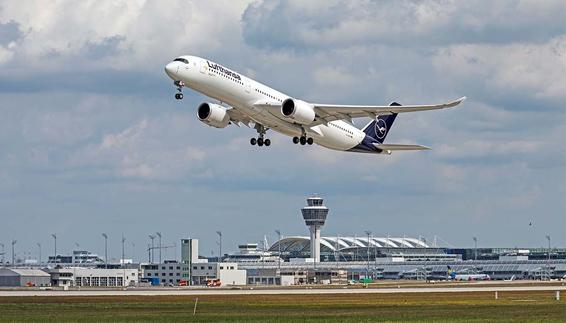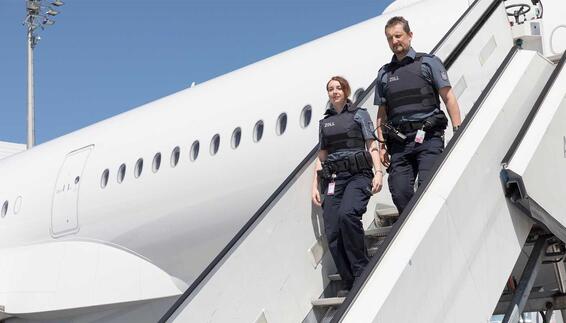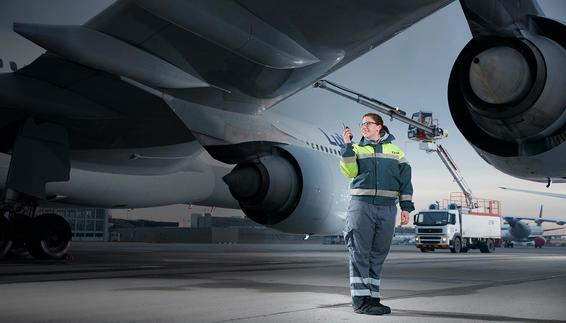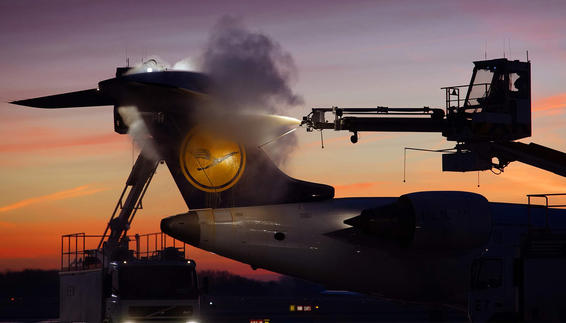In winter conditions, when aircraft need to be freed of snow and ice before take-off, it's time to take out the "polar bears": special vehicles that spray de-icing fluids onto the appropriate surfaces at the head of the runway.
The remainder of the used material is collected along with the melted snow and ice and regenerated in an elaborate process. The recycling facility on the airport campus went into operation back in 1992 and is stil considered the largest of its kind.
Despite the advanced technology, the regeneration of the fluid takes place in a rapid cycle: The fluids sprayed by the polar bears on Monday is reused on Thursday.







